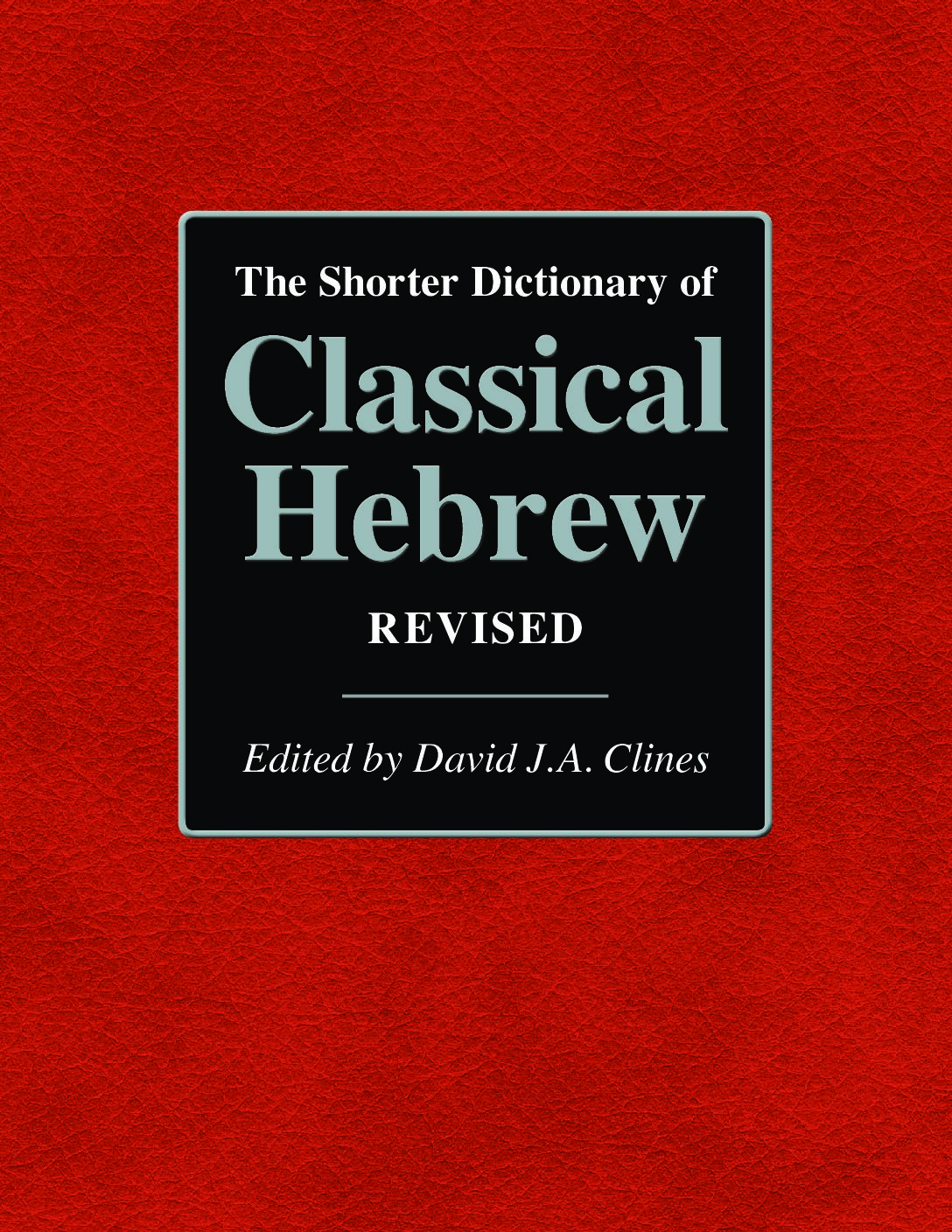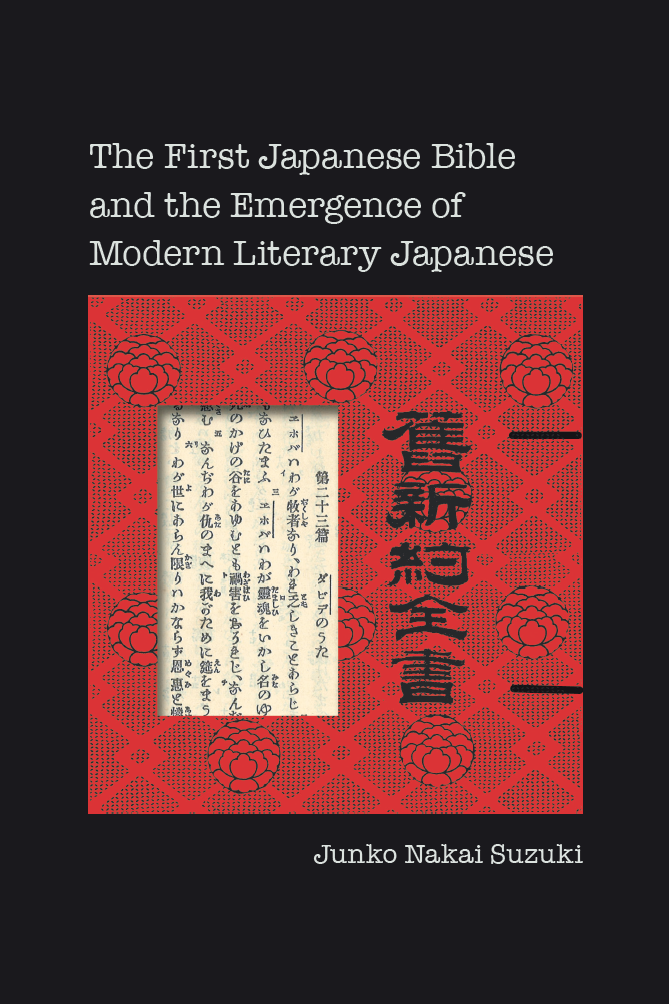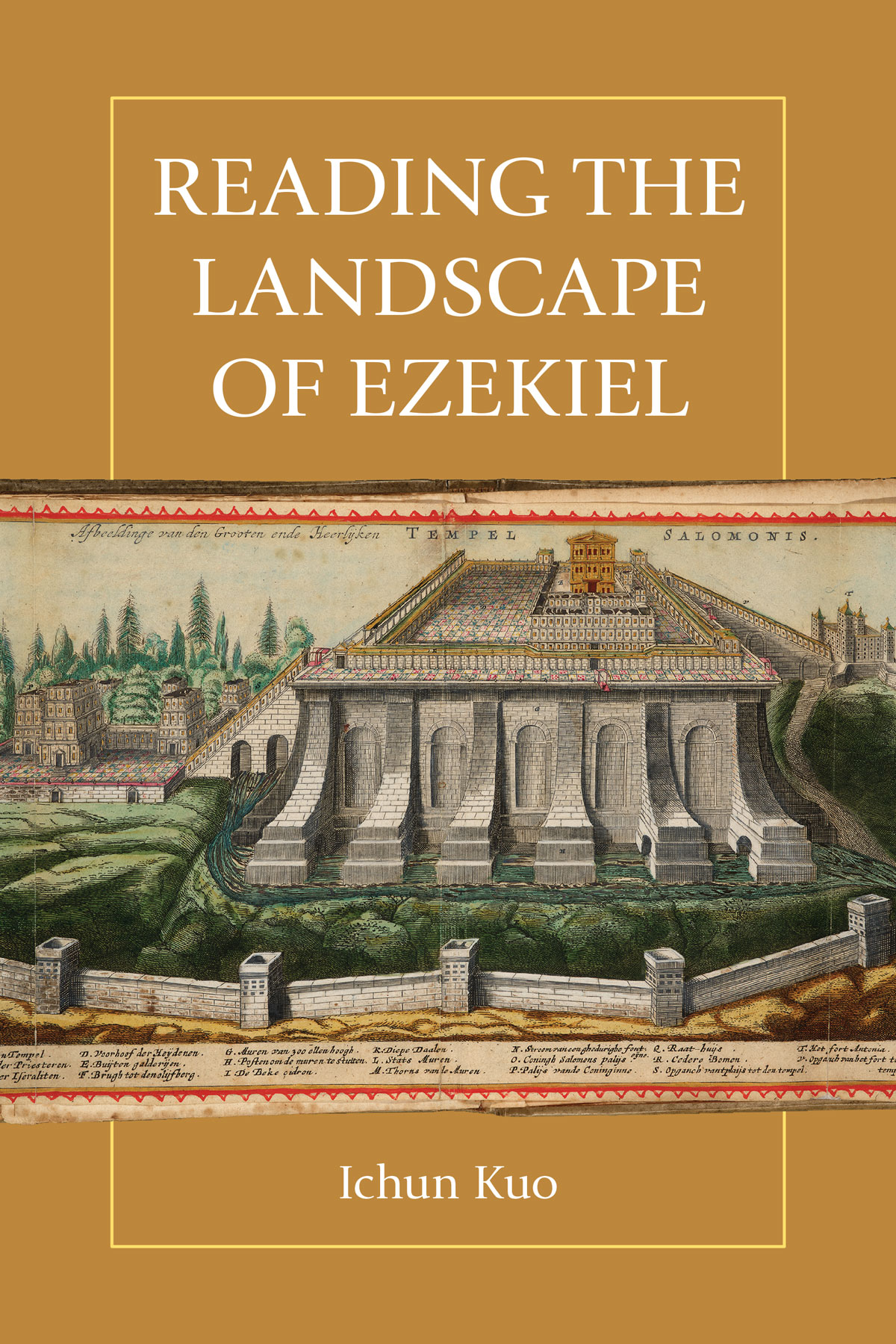Sale
The Shorter Dictionary of Classical Hebrew Revised
Published: July 2024
Original price was: £250.00.£100.00Current price is: £100.00.
The Shorter Dictionary of Classical Hebrew Revised (2024) is a single volume desk dictionary abridgement of The Dictionary of Classical Hebrew Revised (DCHR) (2018–2028). The Shorter Dictionary is over 825,000 words in length, placing into a single volume 1/6th of the material of the complete DCHR (over 5 million words), and is designed to be a replacement for BDB (the standard 1906 English lexicon of Hebrew).
The Shorter Dictionary contains more than 6,420 Hebrew words not in BDB, and refers to many newly published texts, including 540 Dead Sea Scrolls and 4,000 ancient Hebrew inscriptions, making it the most thorough Hebrew dictionary ever produced.
Every Hebrew word in The Shorter Dictionary is followed immediately by an English translation (except for the variant forms of a word and the byforms), so that The Shorter Dictionary can be easily understood by a person with little or no Hebrew.
Further features of the dictionary include:
–Scope—The Shorter Dictionary includes not only Biblical Hebrew but also all Classical Hebrew (pre-200 ce), i .e . Ben Sira, Dead Sea Scrolls, inscriptions.
–Syntagmatic analysis—shows examples of subjects and objects of verbs, those of which a noun is subject or object, etc.
–Occurrence statistics—for each word in the four corpora of Classical Hebrew: Hebrew Bible, Ben Sira, Dead Sea Scrolls, Inscriptions—and for each voice (binyan) of a verb.
–Parallels and oppositions. Shows all words used in parallel or opposition in texts.
–A notation of: 4,285 byforms (words with the same meaning and similar form) identified for the first time; 717 verbal nouns (nouns derived from a verb) -with their own articles (not previously shown in Hebrew lexica); 345 denominative verbs (verbs derived from a noun); and the semantic field to which every word belongs (a totally new feature for Hebrew dictionaries).
–An abbreviated version of DCHR’s extensive bibliographies is provided in The Shorter Dictionary.
Not only is The Shorter Dictionary three times longer than The Concise Dictionary of Classical Hebrew (2009)—also The Concise Dictionary is an abbreviation of the original Dictionary of Classical Hebrew (1993–2016), whereas The Shorter Dictionary of Classical Hebrew Revised contains the improved and expanded approach of DCHR (2018–2028).
The Shorter Dictionary (2024) has always planned to be released during the longer period of publication for the 9 volumes of DCHR. From 2019 to 2022 David J.A. Clines, prior to his final illnesses and death:
–completed every necessary editorial task for the future volumes;
–oversaw the preparation of and collation of most materials;
–and provided the means by which the project Research Associate, David Stec, could collate The Shorter Dictionary as well as bring the remaining DCHR volumes to publication.
List price: £250 / $400 / €300
Scholars' price: £125 / $200 / €150 (use code 'scholar' at checkout)
DCHR 1–9 Subscribers' price: £100 / $160 / €120 (email: phoenix.bibs@sheffield.ac.uk for further information)
Sale
The Shorter Dictionary of Classical Hebrew Revised
Original price was: £250.00.£100.00Current price is: £100.00.
The Shorter Dictionary of Classical Hebrew Revised (2024) is a single volume desk dictionary abridgement of The Dictionary of Classical Hebrew Revised (DCHR) (2018–2028). The Shorter Dictionary is over 825,000 words in length, placing into a single volume 1/6th of the material of the complete DCHR (over 5 million words), and is designed to be a replacement for BDB (the standard 1906 English lexicon of Hebrew).
The Shorter Dictionary contains more than 6,420 Hebrew words not in BDB, and refers to many newly published texts, including 540 Dead Sea Scrolls and 4,000 ancient Hebrew inscriptions, making it the most thorough Hebrew dictionary ever produced.
Every Hebrew word in The Shorter Dictionary is followed immediately by an English translation (except for the variant forms of a word and the byforms), so that The Shorter Dictionary can be easily understood by a person with little or no Hebrew.
Further features of the dictionary include:
–Scope—The Shorter Dictionary includes not only Biblical Hebrew but also all Classical Hebrew (pre-200 ce), i .e . Ben Sira, Dead Sea Scrolls, inscriptions.
–Syntagmatic analysis—shows examples of subjects and objects of verbs, those of which a noun is subject or object, etc.
–Occurrence statistics—for each word in the four corpora of Classical Hebrew: Hebrew Bible, Ben Sira, Dead Sea Scrolls, Inscriptions—and for each voice (binyan) of a verb.
–Parallels and oppositions. Shows all words used in parallel or opposition in texts.
–A notation of: 4,285 byforms (words with the same meaning and similar form) identified for the first time; 717 verbal nouns (nouns derived from a verb) -with their own articles (not previously shown in Hebrew lexica); 345 denominative verbs (verbs derived from a noun); and the semantic field to which every word belongs (a totally new feature for Hebrew dictionaries).
–An abbreviated version of DCHR’s extensive bibliographies is provided in The Shorter Dictionary.
Not only is The Shorter Dictionary three times longer than The Concise Dictionary of Classical Hebrew (2009)—also The Concise Dictionary is an abbreviation of the original Dictionary of Classical Hebrew (1993–2016), whereas The Shorter Dictionary of Classical Hebrew Revised contains the improved and expanded approach of DCHR (2018–2028).
The Shorter Dictionary (2024) has always planned to be released during the longer period of publication for the 9 volumes of DCHR. From 2019 to 2022 David J.A. Clines, prior to his final illnesses and death:
–completed every necessary editorial task for the future volumes;
–oversaw the preparation of and collation of most materials;
–and provided the means by which the project Research Associate, David Stec, could collate The Shorter Dictionary as well as bring the remaining DCHR volumes to publication.
List price: £250 / $400 / €300
Scholars' price: £125 / $200 / €150 (use code 'scholar' at checkout)
DCHR 1–9 Subscribers' price: £100 / $160 / €120 (email: phoenix.bibs@sheffield.ac.uk for further information)
Sale
The First Japanese Bible, and its Role in the Emergence of Modern Literary Japanese
Published: Jun 2024
Original price was: £85.00.£36.00Current price is: £36.00.
This ground-breaking book depicts the life, times and works of the Bible translators of nineteenth-century Japan and the prominent role they played in helping to shape modern Japan.
The translation of the Bible into Japanese occurred at a time of great cultural turmoil, when Japan was grappling with industrial and technological modernization in the shift from a feudal agrarian society after 260 years of isolation. In this turmoil, the cultural question of literary style was deemed of great importance. Because of the dichotomy between those who read Chinese (in a Japanese way) and those who did not, the need for reform and simplification was considered an essential aspect of the modernization of Japanese society. The Japanese Bible emerged as a prime example of such a style.
Suzuki’s study traces the development of the primary versions that culminated in the production of the first complete Japanese Bible, the Meiji Version of 1887. The translation of the Psalms, in particular, gained wide acclaim, even being said to be as incomparable as Mt Fuji. The literary quality of the Hebrew Bible was conveyed by the integration of a pure Japanese elegance, Chinese gravitas and freshness of Western and even some Hebrew elements of style.
For the first time, this volume gives due weight to three factors: appreciation of the Chinese Bible by the Japanese Bible translation, its fidelity to the primary Hebrew and Greek source texts, and its adoption of a pure Japanese style as the foundation.
Sale
The First Japanese Bible, and its Role in the Emergence of Modern Literary Japanese
Original price was: £85.00.£36.00Current price is: £36.00.
This ground-breaking book depicts the life, times and works of the Bible translators of nineteenth-century Japan and the prominent role they played in helping to shape modern Japan.
The translation of the Bible into Japanese occurred at a time of great cultural turmoil, when Japan was grappling with industrial and technological modernization in the shift from a feudal agrarian society after 260 years of isolation. In this turmoil, the cultural question of literary style was deemed of great importance. Because of the dichotomy between those who read Chinese (in a Japanese way) and those who did not, the need for reform and simplification was considered an essential aspect of the modernization of Japanese society. The Japanese Bible emerged as a prime example of such a style.
Suzuki’s study traces the development of the primary versions that culminated in the production of the first complete Japanese Bible, the Meiji Version of 1887. The translation of the Psalms, in particular, gained wide acclaim, even being said to be as incomparable as Mt Fuji. The literary quality of the Hebrew Bible was conveyed by the integration of a pure Japanese elegance, Chinese gravitas and freshness of Western and even some Hebrew elements of style.
For the first time, this volume gives due weight to three factors: appreciation of the Chinese Bible by the Japanese Bible translation, its fidelity to the primary Hebrew and Greek source texts, and its adoption of a pure Japanese style as the foundation.
Sale
Reading the Landscape of Ezekiel 40-48: A Theology of Resilience
Published: Jun 2024
Original price was: £75.00.£35.00Current price is: £35.00.
When the landscape architect IChun Kuo opens up an ancient plan written in the book of Ezekiel, she encounters a planner who is called “son of man”, who was instructed to a vision. Bewildered by this unworldly yet grounded visioned plan, Kuo seeks help from Assyrian King Sennacherib who constructed gardens, Jerome who was puzzled by the labyrinth, Newton who was obsessed with the measurement. She asks biblical scholars, archaeologists, architects and planners, until she finds the patterns.
Reading the Landscape of Ezekiel is a journey of decoding a mesmerizing ancient landscape, which reflects history of social and ecological catastrophes, survival and renovation, and the mechanisms of God’s design. Kuo argues that Ezekiel 40–48 can be understood as an ancient resilient landscape plan that encompasses rigidity and ductility, resistance and recovery.
Given the ancient hazards described in Ezekiel (sword, famine, evil creatures, and pestilence), the mechanism of landscape resilience in Ezekiel 40–48 is similar to modern time ecosystem resilience, as well as disaster risk reduction, and epidemiology/public health of war and defence policy. An understanding of the ancient planning in Ezekiel 40–48 may shed light on our reading of the biblical text, our way of viewing the depicted visions, as well as the implications of our planning of the environment.
Sale
Reading the Landscape of Ezekiel 40-48: A Theology of Resilience
Original price was: £75.00.£35.00Current price is: £35.00.
When the landscape architect IChun Kuo opens up an ancient plan written in the book of Ezekiel, she encounters a planner who is called “son of man”, who was instructed to a vision. Bewildered by this unworldly yet grounded visioned plan, Kuo seeks help from Assyrian King Sennacherib who constructed gardens, Jerome who was puzzled by the labyrinth, Newton who was obsessed with the measurement. She asks biblical scholars, archaeologists, architects and planners, until she finds the patterns.
Reading the Landscape of Ezekiel is a journey of decoding a mesmerizing ancient landscape, which reflects history of social and ecological catastrophes, survival and renovation, and the mechanisms of God’s design. Kuo argues that Ezekiel 40–48 can be understood as an ancient resilient landscape plan that encompasses rigidity and ductility, resistance and recovery.
Given the ancient hazards described in Ezekiel (sword, famine, evil creatures, and pestilence), the mechanism of landscape resilience in Ezekiel 40–48 is similar to modern time ecosystem resilience, as well as disaster risk reduction, and epidemiology/public health of war and defence policy. An understanding of the ancient planning in Ezekiel 40–48 may shed light on our reading of the biblical text, our way of viewing the depicted visions, as well as the implications of our planning of the environment.
Sale
‘Good Omens’ and the Bible
Published: Jun 2024
Original price was: £50.00.£22.00Current price is: £22.00.
Good Omens and the Bible provides a diversely rich collection of considerations of apocalypse and apocalypticism, via responses to the reception of the Bible in the landmark cultural icon that is Neil Gaiman and Terry Pratchett’s Good Omens: The Nice and Accurate Prophecies of Agnes Nutter, Witch (1990). These essays explore the perplexing, captivating, and curious interactions between Good Omens and biblical literature.
Interdisciplinary explorations reveal how both the novel and TV series reflects and explodes contemporary ideas about the end times. Filtering references to biblical apocalypses through the lens of popular culture, Good Omens shines a light on the received interpretations of apocalyptic thinking that resonate in the present, revealing in turn something about ourselves.
Together, these essays open up conversations about how Good Omens makes use of religious ideas about textuality, performance, theodicy, and the role of popular culture in the proliferation of those conversations. This book illustrates the ways in which the novel and series are agents in the continuation of cultural debates about important, wide-ranging theological and biblical issues.
Sale
‘Good Omens’ and the Bible
Original price was: £50.00.£22.00Current price is: £22.00.
Good Omens and the Bible provides a diversely rich collection of considerations of apocalypse and apocalypticism, via responses to the reception of the Bible in the landmark cultural icon that is Neil Gaiman and Terry Pratchett’s Good Omens: The Nice and Accurate Prophecies of Agnes Nutter, Witch (1990). These essays explore the perplexing, captivating, and curious interactions between Good Omens and biblical literature.
Interdisciplinary explorations reveal how both the novel and TV series reflects and explodes contemporary ideas about the end times. Filtering references to biblical apocalypses through the lens of popular culture, Good Omens shines a light on the received interpretations of apocalyptic thinking that resonate in the present, revealing in turn something about ourselves.
Together, these essays open up conversations about how Good Omens makes use of religious ideas about textuality, performance, theodicy, and the role of popular culture in the proliferation of those conversations. This book illustrates the ways in which the novel and series are agents in the continuation of cultural debates about important, wide-ranging theological and biblical issues.





Nahum: A Trauma for a Trauma
Nahum: A Trauma for a Trauma